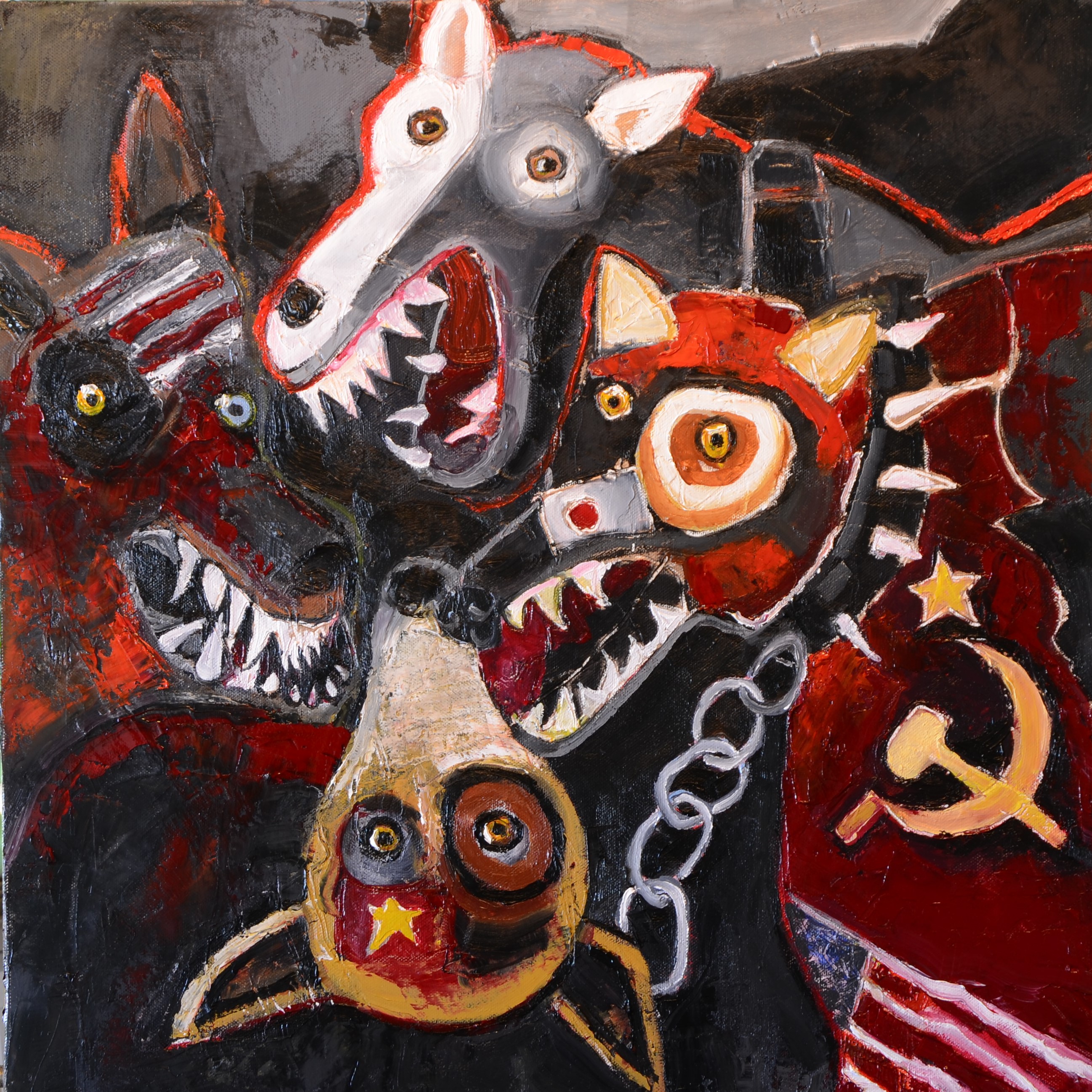
War Dogs #2 by Patrick Brown
A profile of the artist
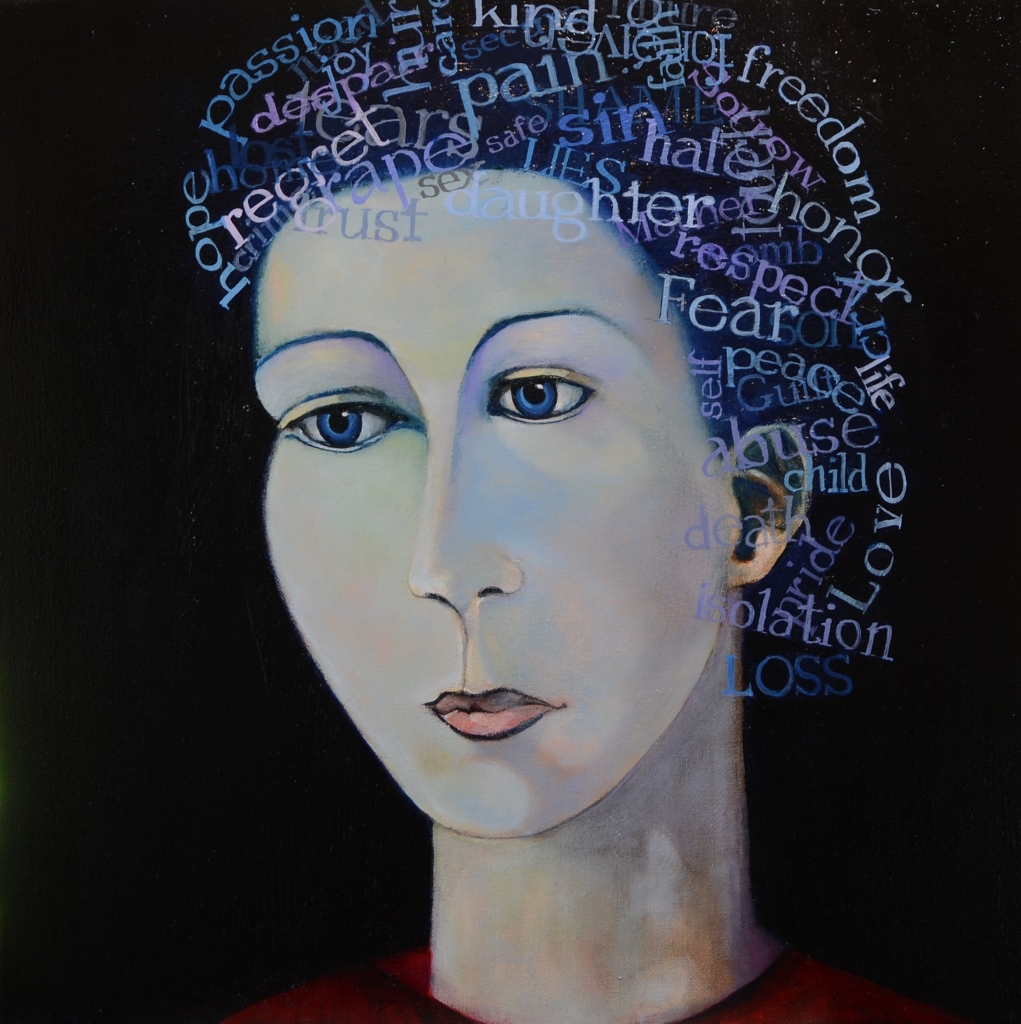
Artist Patrick Brown is a fairly quiet man—perhaps a bit shy—with a cute laugh, a slight Southern accent, and a gentle sadness that sometimes shades his eyes. It’s a companionable sorrow, though. It reaches into his paintings and says, “It might hurt, but it’s OK to look; you know me.” And while there’s no recognized treatment for his particular sorrow, it is treatment of another sort that brought Patrick to California almost four years ago, from Nashville, Tennessee.
Before he left, he had been seriously ill, Patrick explains over a late breakfast at Swami’s in Escondido. He’d had to sell his home to pay medical bills, and the prospect of Obamacare had forecast relief. But, like many red states, Tennessee rejected the expansion of Medicaid, abandoning Patrick to the middle of the legendary—and life-threatening—healthcare doughnut hole.
“My doctor said that either I had to come up with $2,000 per month or find a place that provided care to people with AIDS.”
So it was, with brushes and canvas and AIDS diagnosis in hand, that Patrick left behind friends and family—including two estranged sons—to obtain healthcare in California, to start a new life, to recover.
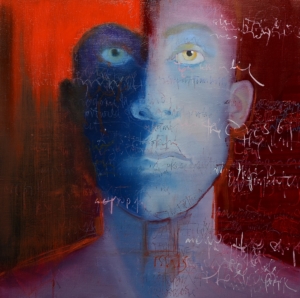
He found a place to live in Escondido, set up a new studio, and showed his art in regional galleries. He was accepted into juried shows, sold a bit of work, and launched a new series of paintings, Sins of the Father—to process his fractured relationships? It was confusing: He’d come out to his sons well before before his diagnosis; it was only after learning he had AIDS that they rejected him.
“They won’t even tell me why they don’t want me to be a part of their lives,” he says, looks down at his blueberry pancakes, pauses for the moment to pass. “It’s better here, but there’s still so much stigma attached to HIV and AIDS.”
And now, since the presidential election, there’s so much uncertainty and concern, enough to draw even the most introspective artist outward.
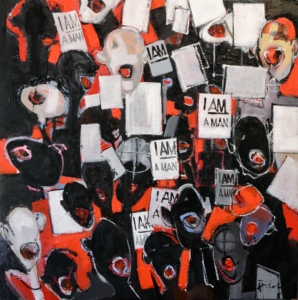
“Sins of the Father started out as a small personal series directly related to the conflict between my sons and me. It turned into a much larger one, to express other people’s family tensions, and then it evolved into what was happening politically—dark subject matter. The first of the newer ones, when the protests with the Black Lives Matter were more prominent in the news media, were ‘Memphis 1968’ and another one titled ‘Protest.’ And then this whole thing with Trump—that he actually won—and the controversies with the manipulation by Russia and the nuclear thing; that brought on my dead-on political paintings.”
It also brought on the more radical activist, harbored since Patrick’s youth, and a new series of paintings, War Dogs.
“It’s inspired by all of the turmoil against the LGBT community, the Hispanic community, women, what’s happening with youth, with bullying and suicide, with religious differences. And who knows what we’re in for the next four years. There are so many people in the world right now living in fear because of the election, the talk of war. We’ve unleashed a man that is giving people permission to discriminate and bully. It’s sad.”
But is there hope? Beyond the sorrow and fear, is there something better to come?
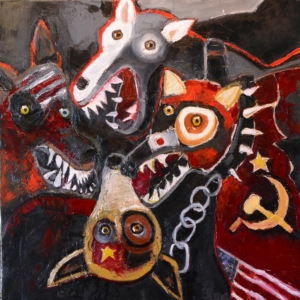
“There may be some hope, but it’s going to take a really big commitment from a lot of people. I don’t know if they have it in them right now. There are some, but you’ve got to mobilize people to take this thing on. That’s what brought on all the stuff with the Vietnam War and Martin Luther King and Black Lives Matter. People were arrested and got back out there. Right now, so many people have been empowered on the negative side, it’s going to take a lot of effort to counter that.”
He pauses again, takes a breath, comes to a conclusion.
“So, yes, my paintings are definitely addressing political things now. Art is a vehicle to make my statement known, my protest. Art’s been a medium of protest for so many for so long—Goya, Picasso, Diego Rivera—it’s a tool. It may not be the best thing to create sales, but it’s important to me to get the message out. It’s not all pretty pictures. I’m going for something that’s making a statement in the best way that I know how. I can’t worry about what other people are going to think about my paintings. One of the greatest things an artist can do is give up painting what they think everyone will like and start painting from the heart. It’s a choice and a responsibility for me.”
Patrick Brown is one of four featured artists in the 4•Up Exhibit at The Studio Door in North Park.
Exhibition dates: January 20 to 29, 2017
Opening reception: Saturday, January 21, from 6 to 8 p.m.
Address: 3050 30th Street, San Diego, California
Patrick Brown was born in East Saint Louis, Illinois in 1953. His education focused on painting at the University of Memphis, Hendrix College and Jefferson College.
Patrick’s successes include an ongoing relationship with the ABC Television Network, where his paintings are used on the sets. He was included in the 2016 juried exhibit and international publication 50 To Watch, featuring Southern California’s top artists. Among his earlier career achievements were mural work and portraits for the interiors of B. B. King’s Blues Clubs in Hollywood, Nashville and Memphis. His work was also included in Southern California’s Summation Exhibit and book publication the last three years, as well as the 2016 national Edgar Allen Poe exhibit in San Diego, California. He is a member of Visual AIDS, The Frank Moore Archives Project and the Escondido Arts Partnership Municipal Gallery.
Patrick currently lives and works in Escondido, California. Visit his website at www.PatrickNBrown.net.
Originally published by by Excuse Me, I’m Writing.
